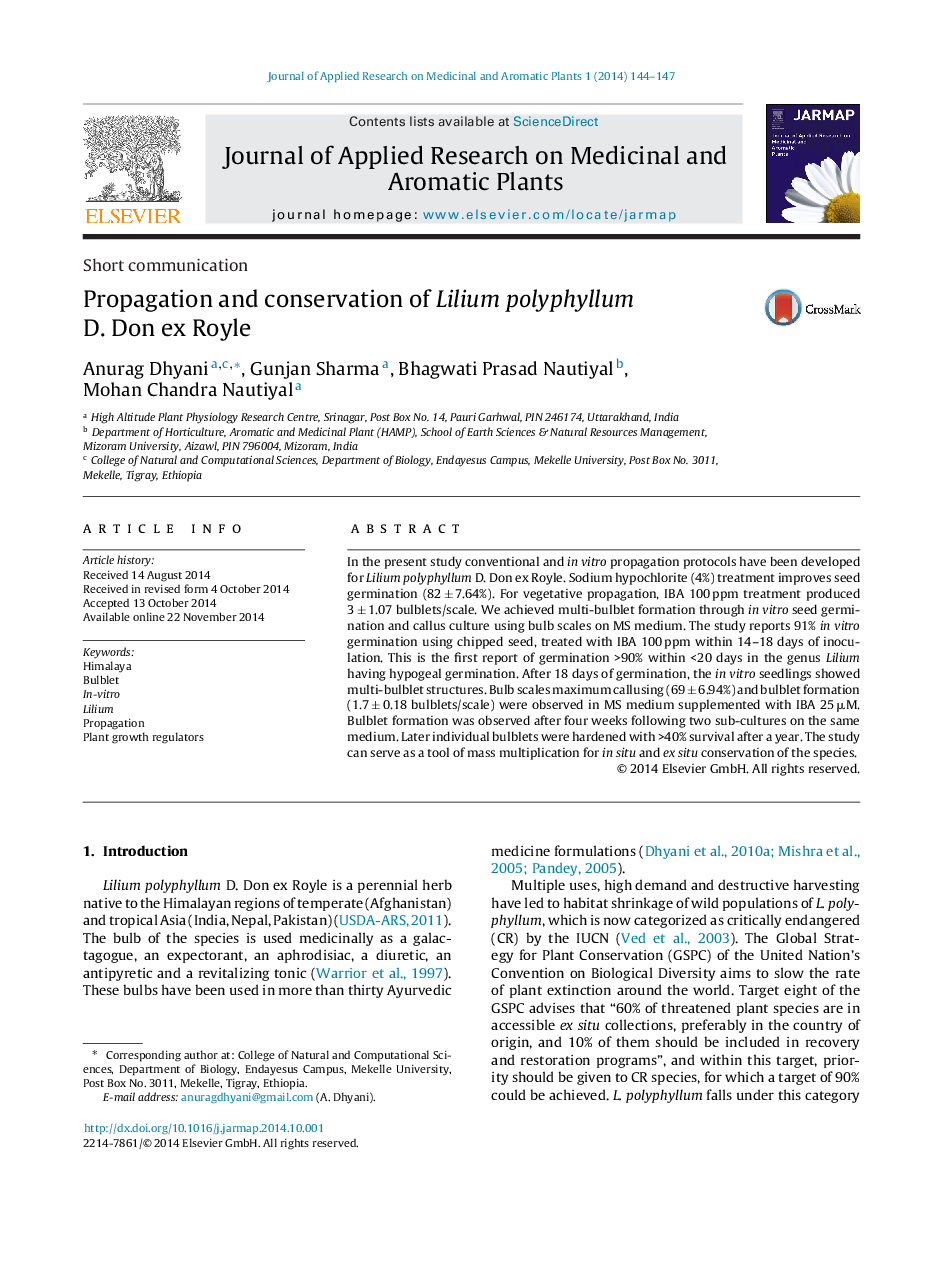| Article ID | Journal | Published Year | Pages | File Type |
|---|---|---|---|---|
| 3099183 | Journal of Applied Research on Medicinal and Aromatic Plants | 2014 | 4 Pages |
•Conventional and in vitro propagation protocols have been developed for Lilium polyphyllum a critically endangered medicinal herb.•Seed germination improved 82% compared to control; indole butyric acid treatment in bulb scale produced 3 bulblets/scale.•Maximum 91% in vitro germination using chipped seed, treated with IBA 100 ppm within 14–18 days of inoculation was achieved.•The study can be used for mass multiplication for in situ and ex situ conservation of the species.
In the present study conventional and in vitro propagation protocols have been developed for Lilium polyphyllum D. Don ex Royle. Sodium hypochlorite (4%) treatment improves seed germination (82 ± 7.64%). For vegetative propagation, IBA 100 ppm treatment produced 3 ± 1.07 bulblets/scale. We achieved multi-bulblet formation through in vitro seed germination and callus culture using bulb scales on MS medium. The study reports 91% in vitro germination using chipped seed, treated with IBA 100 ppm within 14–18 days of inoculation. This is the first report of germination >90% within <20 days in the genus Lilium having hypogeal germination. After 18 days of germination, the in vitro seedlings showed multi-bulblet structures. Bulb scales maximum callusing (69 ± 6.94%) and bulblet formation (1.7 ± 0.18 bulblets/scale) were observed in MS medium supplemented with IBA 25 μM. Bulblet formation was observed after four weeks following two sub-cultures on the same medium. Later individual bulblets were hardened with >40% survival after a year. The study can serve as a tool of mass multiplication for in situ and ex situ conservation of the species.
